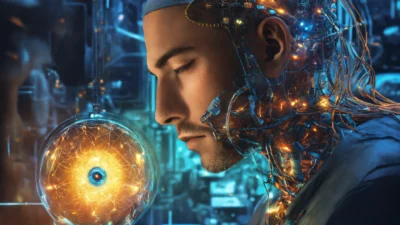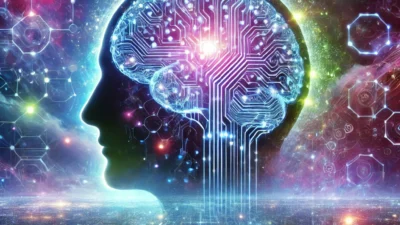The Rise of Human Augmentation Technology
In recent years, human augmentation technology has evolved from a futuristic concept into a transformative reality. Innovations in biotechnology, cybernetics, and artificial intelligence are expanding the boundaries of human potential, enhancing both physical and cognitive capabilities. As these advancements accelerate, they bring both opportunities and challenges that will shape the future of humanity.
Expanding Human Potential
One of the most significant benefits of human augmentation is its ability to improve the lives of individuals with disabilities. Advanced prosthetic limbs, controlled by neural signals, offer enhanced mobility and functionality, allowing users to regain independence. Similarly, exoskeletons assist individuals with mobility impairments, enabling them to walk again. These breakthroughs demonstrate how technology can bridge gaps in human ability and redefine accessibility.
Beyond medical applications, human augmentation is revolutionizing various industries. Military and defense sectors are exploring augmented soldiers equipped with enhanced strength and endurance. In professional sports, wearable technology and performance-enhancing implants are pushing the limits of human physicality. Meanwhile, workplace applications, such as brain-machine interfaces, promise to increase productivity by enabling direct interaction between the human mind and digital systems.
Cognitive Enhancements and Brain-Computer Interfaces
Human augmentation is not limited to physical enhancements; cognitive advancements are also becoming a reality. Brain-computer interfaces (BCIs) allow individuals to control devices with their thoughts, paving the way for seamless communication between humans and machines. This technology holds immense promise for individuals with neurological disorders, offering new ways to communicate and interact with the world.
Furthermore, cognitive augmentation through AI-driven assistants can improve memory, problem-solving abilities, and decision-making processes. The ability to integrate artificial intelligence directly with human cognition raises exciting possibilities for education, research, and creative industries.
Ethical Considerations and Societal Impact
Despite its potential, human augmentation technology presents ethical dilemmas that must be addressed. Key concerns include privacy, consent, and equality. For example, brain-computer interfaces could lead to unauthorized data collection, raising serious privacy issues. Additionally, disparities in access to augmentation technology could create a societal divide, where only the wealthy benefit from enhanced capabilities.
Another major concern is the definition of human identity. As we integrate technology into our bodies and minds, questions arise about what it means to be human. Should there be limits on enhancement? How do we ensure that augmentation does not lead to unintended consequences, such as job displacement or social stratification?
Shaping the Future Responsibly
As human augmentation technology continues to advance, it is essential to establish ethical frameworks that guide its development. Governments, researchers, and technology companies must collaborate to create regulations that promote responsible innovation while safeguarding human rights.
Public discourse is also crucial. Society must engage in discussions about the benefits and risks of augmentation, ensuring that the technology serves humanity rather than exploits it. By prioritizing ethical considerations, we can embrace human augmentation in a way that enhances lives without compromising fundamental values.
Conclusion
Human augmentation technology is poised to redefine the future, offering unprecedented opportunities for advancement. From medical breakthroughs to cognitive enhancements, the potential benefits are immense. However, as we push the boundaries of human capability, we must remain mindful of the ethical and societal implications. By fostering responsible innovation, we can create a future where technology empowers individuals while preserving the essence of what it means to be human.





